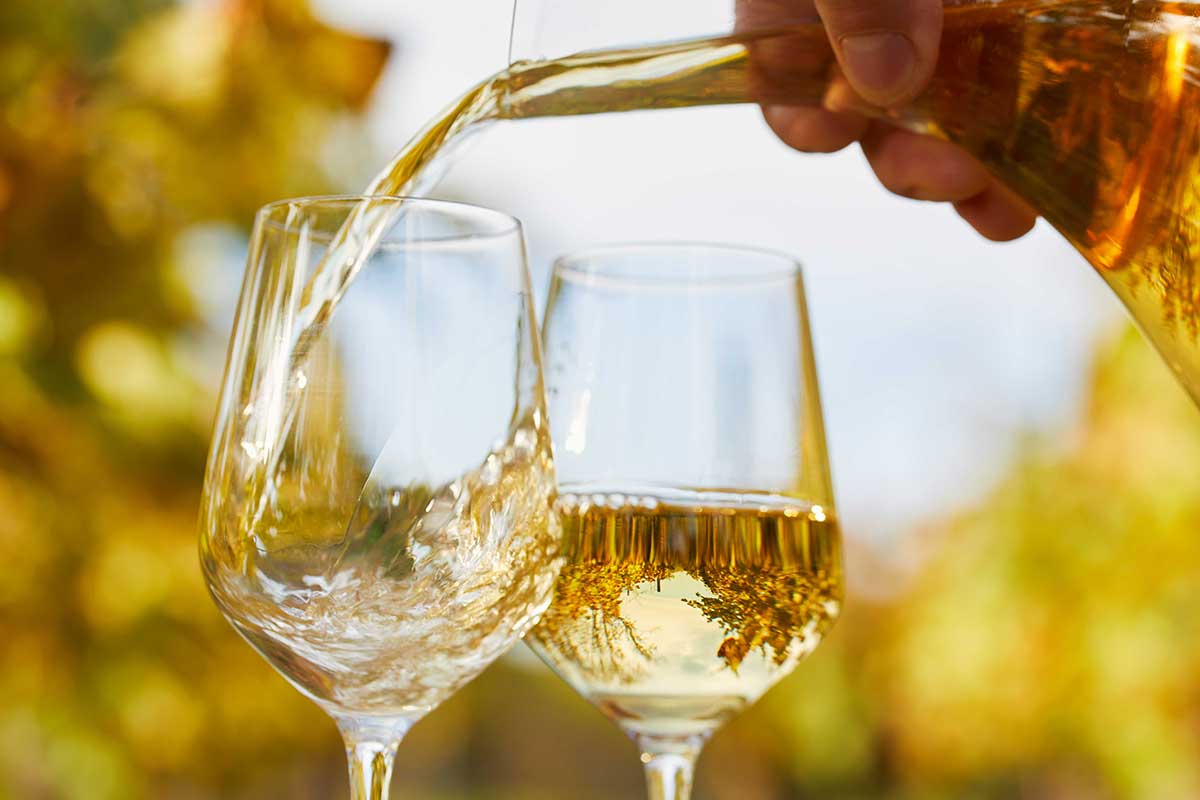How to Store White Wine
White wines are a less common choice for long term cellaring. Most white wines do not benefit from long aging periods, though some Chardonnays and other full-bodied or more tannic white wines can do well with 5 or more years in the cellar.
White wine storage and aging has most of the same requirements as red wine storage; the environment should be dark, free from excess vibration, cool and humid. The ideal humidity is similar for all wines, around 60% relative humidity, but white wines can be stored at cooler temperatures than reds. Forty-five to 50 degrees Fahrenheit is good for whites, so they should be stored in the cooler sections of your cellar. Usually this will be lower shelves or racks, or a spot close to the cool air exhaust of the cooling unit. You can read more about the chemistry of aging wine in the education center.

This was a very large residential traditional custom wine cellar in Palos Verdes, California Vintage Cellars built back in the early 1990’s.
How to Serve White Wine
When you pull a bottle of white wine out of the cellar, you may actually want to chill it further, depending on the particular qualities of that varietal. Fuller-bodied or oaked white wines are best served at around 50 degrees, so they can go straight from cellar to table. Medium to light-bodied whites will be better if they are chilled to around 45 to 50 degrees, with the fruitiest or sweeter white wines at the cooler end of the scale. Sparkling whites should be served at the coolest temperatures; read the full article on storing and serving sparkling wines for more information.
Ideal Wine Serving Temperatures for White Wines
- Full-bodied or Oaked White Wines: 45 to 50 degrees Fahrenheit
- Medium to light-bodied White Wines: 45 to 50 degrees Fahrenheit
- Champagne and Sparkling Wines: 40 to 45 degrees Fahrenheit
No Decanting for White Wine
White wines rarely need to be decanted for sediment.
Taller and Narrower Glasses for White Wines
Traditionally, white wines are served in taller and narrower glasses than those used for reds. Since white wines do not need to breathe as much as reds, the large surface area is not necessary. As with red wine glassware, you can buy varietal specific glasses.
Properly Opening Your Bottle of Wine
There is a specific process to opening a bottle of wine to avoid problems that can happen while opening and serving your wine.
The process for properly opening your bottle of wine is outlined in our article How to
Properly Open and Serve a Bottle of Wine.
Storing White Wine after Opening
Just as with red wines, if you want to store an open bottle of white wine it should be recorked (some bottle openers can also recork) or a wine bottle stopper should be used. Corked bottles of white wine will usually keep well a couple days in the refrigerator.
If you want to be able to serve wine by the glass, or if you often store opened bottles, a preservation system might be right for you. Don't forget that wine that has sat open too long to be at its best for drinking can still be used for cooking.
More About Storing and Serving Wine
We have written three articles that go into the detail of the differences for storing red wine,
white wine, and champagne and sparkling wines.









